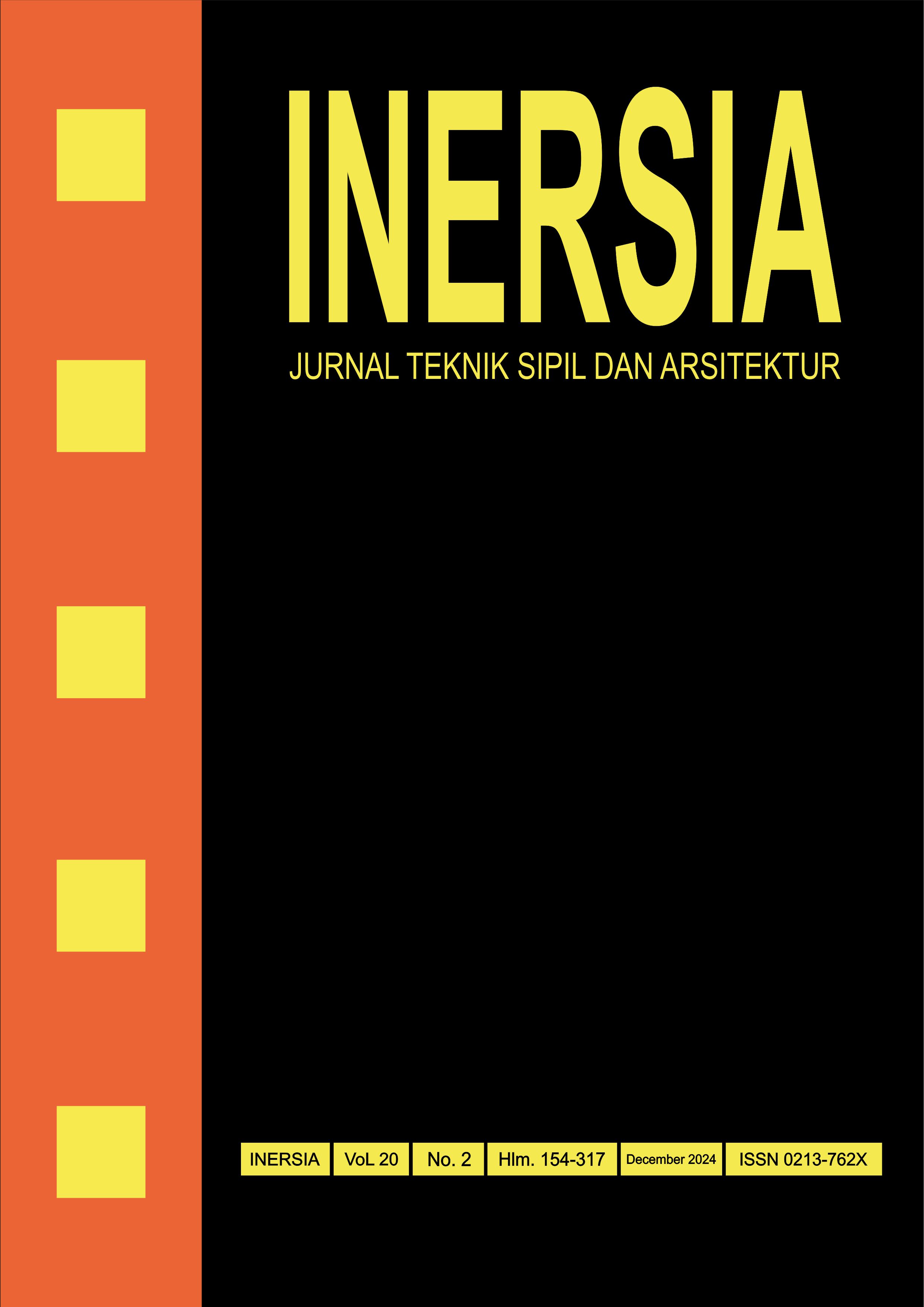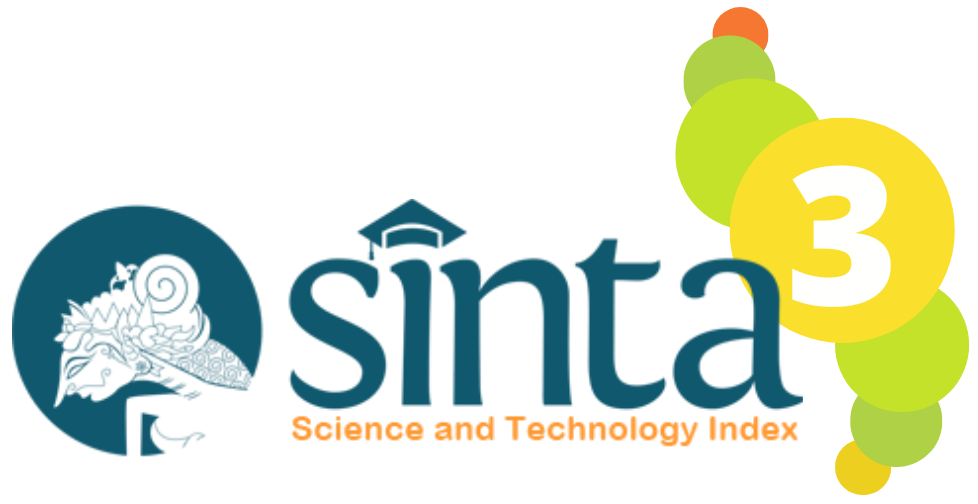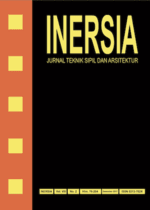Effect of Sand Sphericity and Cement-to-sand Ratio on Effective Porosity and Permeability of Concrete Sand Filter
DOI:
https://doi.org/10.21831/inersia.v20i2.76088Keywords:
Cement-to-sand Ratio, Concrete Sand Filter, Effective Porosity, Permeability, SphericityAbstract
Sand filter is a widely used water treatment technology due to its operational simplicity. The drawbacks of sand filter operation are long backwash times and particle stratification, leading to high energy and sand replacement costs. The concrete sand filter (CSF) was created by mixing sand with cement paste as a binding agent. CSF establishes its water production capacity based on its effective porosity and permeability, which are influenced by the shape of the sand. CSF may have more spherical particles because the cement paste covers the sand. Previous studies have investigated the influence of the shape and size of aggregates on the porosity and permeability of pervious concrete. This study investigates the effective porosity and permeability of CSF using various sand shapes and cement-to-sand (c:s) ratios, as well as changes in the shape of the sand grains used to build the CSF due to mixing with cement paste. The sand types are characterized by their circle ratio sphericity; the c:s ratios tested are 0, 1:6.4, and 1:8.6. All specimens are 10.9 cm in diameter and 20 cm in height. The water displacement method was employed to measure the effective porosity, while the constant head method was used to determine the permeability. The results indicate that when the circle ratio sphericity of the sand used to build the filter increases, the effective porosity and permeability of filters decrease for all values of c:s. Specimens with high cement content have lower effective porosity and permeability and show a strong linear relationship (R² = 0.9555 at c:s = 1:6.4).References
ACI 522R, "ACI522 - Pervious Concrete (PFE)," American Concrete Institute. 2010.
K. S. Elango and V. Revathi, "Infiltration and clogging characteristics of pervious concrete," Asian J. Civ. Eng., vol. 20, no. 8, pp. 1119–1127, 2019, doi: 10.1007/s42107-019-00170-w.
M. M. Taghizadeh, A. Torabian, M. Borghei, and A. H. Hassani, "A study of feasibility for water purification using vertical porous concrete filter," Int. J. Environ. Sci. Technol., vol. 4, no. 4, pp. 505–512, 2007, doi: 10.1007/BF03325987.
R. Triatmadja, "Kajian Awal Prospek Filter Beton Pasir Sebagai Teknologi Tepat Filtrasi Air Bersih," Pros. Semin. Nas. Teknol. Tepat Guna Penanganan Sarana Prasarana di Indones., pp. 1–9, 2008.
B. Kamulyan, F. Nurrochmad, R. Triatmadja, and Sunjoto, "The Head Loss Development and Turbidity Removal of the Filtration using Concrete Sand Filter with Various Cement to Sand Ratio," Proceeding 4th ASEAN Environ. Eng. Conf., pp. 17–20, 2011.
K. Seifeddine, S. Amziane, and E. Toussaint, "State of the art on the hydraulic properties of pervious concrete," Road Mater. Pavement Des., vol. 24, no. 11, pp. 2561–2596, 2023, doi: 10.1080/14680629.2022.2164332.
G. F. B. Sandoval, I. Galobardes, R. S. Teixeira, and B. M. Toralles, "Comparison between the falling head and the constant head permeability tests to assess the permeability coefficient of sustainable Pervious Concretes," Case Stud. Constr. Mater., vol. 7, no. August, pp. 317–328, 2017, doi: 10.1016/j.cscm.2017.09.001.
C. Lian, Y. Zhuge, and S. Beecham, "The relationship between porosity and strength for porous concrete," Constr. Build. Mater., vol. 25, no. 11, pp. 4294–4298, 2011, doi: 10.1016/j.conbuildmat.2011.05.005.
D. Yavuz, Åž. Yazıcı, M. S. Avcı, and D. í–zmen, "A novel approach to estimate the tortuosity of pervious concretes using computed tomography," Mater. Struct. Constr., vol. 56, no. 4, 2023, doi: 10.1617/s11527-023-02166-0.
N. Neithalath, M. S. Sumanasooriya, and O. Deo, "Characterizing pore volume, sizes, and connectivity in pervious concretes for permeability prediction," Mater. Charact., vol. 61, no. 8, pp. 802–813, 2010, doi: 10.1016/j.matchar.2010.05.004.
B. Kamulyan, "Karakteristik Hidraulik Filtrasi Dan Cucibalik Filter Beton," Universitas Gadjah Mada, 2014.
S. Wu, Q. Wu, J. Shan, X. Cai, X. Su, and X. Sun, "Effect of morphological characteristics of aggregate on the performance of pervious concrete," Constr. Build. Mater., vol. 367, no. December 2022, p. 130219, 2023, doi: 10.1016/j.conbuildmat.2022.130219.
R. D. Arviananda, B. Kamulyan, and F. Nurrochmad, "Studies of Improving Drinking Water Quality in the Kalurahan Banaran Kabupaten Kulon Progo Using Porous Concrete Filter," INERSIA lnformasi dan Ekspose Has. Ris. Tek. Sipil dan Arsit., vol. 19, no. 2, pp. 194–202, 2023, doi: 10.21831/inersia.v19i2.64125.
R. Rorato, M. Arroyo, E. Andí², and A. Gens, "Sphericity measures of sand grains," Eng. Geol., vol. 254, no. October 2018, pp. 43–53, 2019, doi: 10.1016/j.enggeo.2019.04.006.
E. Yogafanny, R. Triatmadja, F. Nurrochmad, and I. Supraba, "Permeability Coefficient of Pervious Cement Mortar Measured By the Constant Head and Falling Head Methods," J. Appl. Eng. Sci., vol. 21, no. 4, pp. 1083–1093, 2023, doi: 10.5937/jaes0-44066.
M. Humaidi, K. Yanuar, A. Rafik, H. F. Agoes, R. A. Fajar, and Surat, "Variation of Cement Types Usage for Compressive Strength of Concrete Quality F'c 35 Mpa," J. Multidisiplin Madani, vol. 3, no. 3, pp. 773–788, 2023, doi: 10.55927/mudima.v3i3.2640.
A. Akkaya and Ä°. H. í‡aÄŸatay, "Investigation of the density, porosity, and permeability properties of pervious concrete with different methods," Constr. Build. Mater., vol. 294, 2021, doi: 10.1016/j.conbuildmat.2021.123539.
D. R. Helsel, R. M. Hirsch, K. R. Ryberg, S. A. Archfield, and E. J. Gilroy, Statistical Methods in Water Resources Techniques and Methods 4 – A3. 2020. [Online]. Available: https://pubs.er.usgs.gov/publication/tm4A3
N. A. Conzelmann, M. N. Partl, F. J. Clemens, C. R. Mí¼ller, and L. D. Poulikakos, "Effect of artificial aggregate shapes on the porosity, tortuosity and permeability of their packings," Powder Technol., vol. 397, 2022, doi: 10.1016/j.powtec.2021.11.063.
S. Ahmad, A. K. Azad, and K. F. Loughlin, "A Study of Permeability and Tortuosity of Concrete," 30th Conf. OUR WORLD Concr. Struct. August 23-24, 2005, Singapore, no. August 2005, p. 9, 2005.
J. Shan, Y. Zhang, S. Wu, Z. Lin, L. Li, and Q. Wu, "Pore characteristics of pervious concrete and their influence on permeability attributes," Constr. Build. Mater., vol. 327, no. December 2021, p. 126874, 2022, doi: 10.1016/j.conbuildmat.2022.126874
Downloads
Published
How to Cite
Issue
Section
License
Authors who publish with INERSIA journal agree to the following terms:
- Authors retain copyright and grant the INERSIA journal right of first publication with the work simultaneously licensed under Creative Commons Attribution License (CC BY 4.0) that allows others to share the work with an acknowledgment of the work's authorship and initial publication in this journal.
- Authors can enter into separate, additional contractual arrangements for the non-exclusive distribution of the published version of the work (e.g., post it to an institutional repository or edit it in a book), with an acknowledgment of its initial publication in this journal.
- Authors are permitted and encouraged to post their work online (e.g., in institutional repositories or on their website) before and during the submission process, as it can lead to productive exchanges, as well as earlier and greater citation of published work.

INERSIA by https://journal.uny.ac.id/index.php/inersia was distributed under a Creative Commons Attribution 4.0 International License











